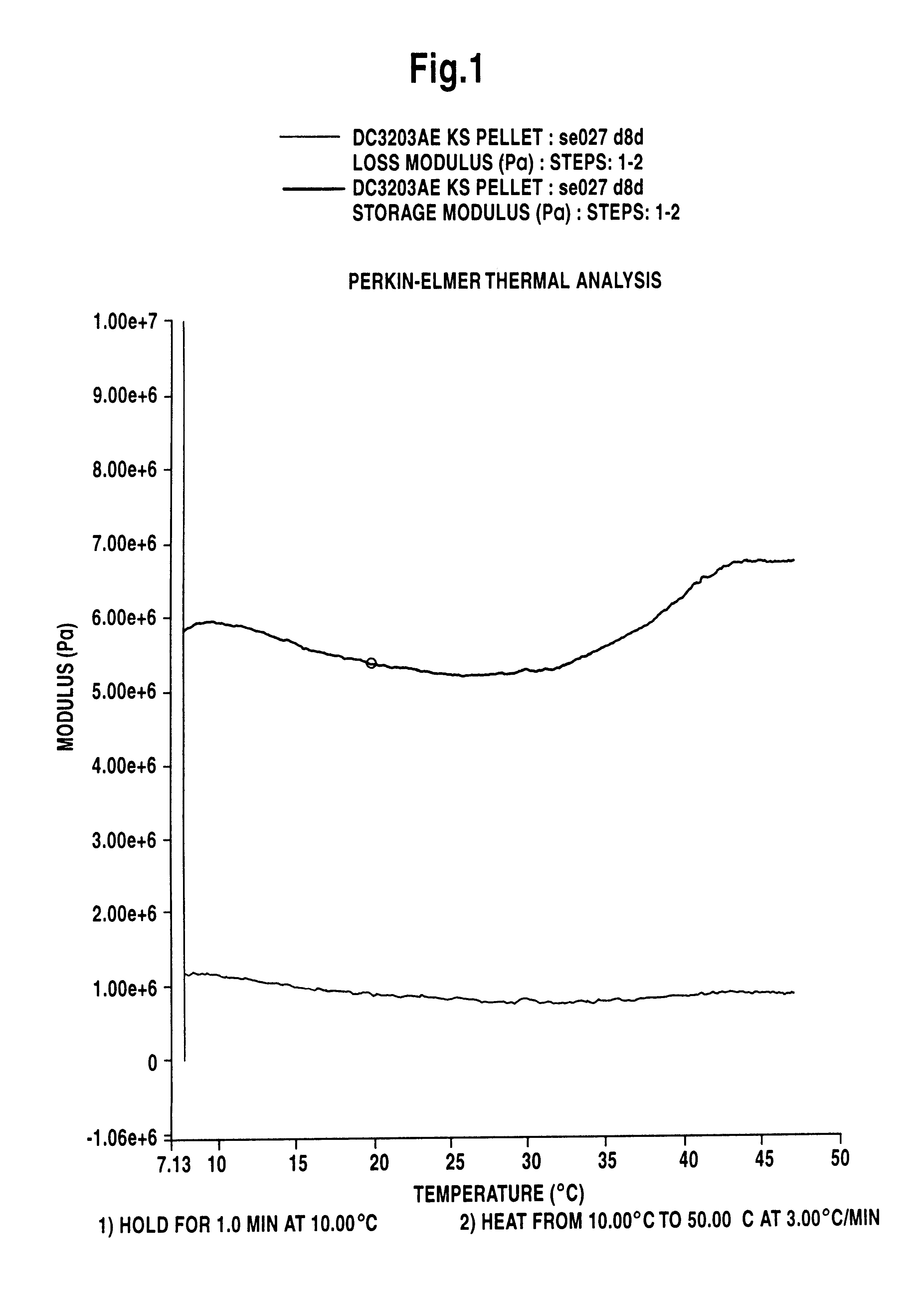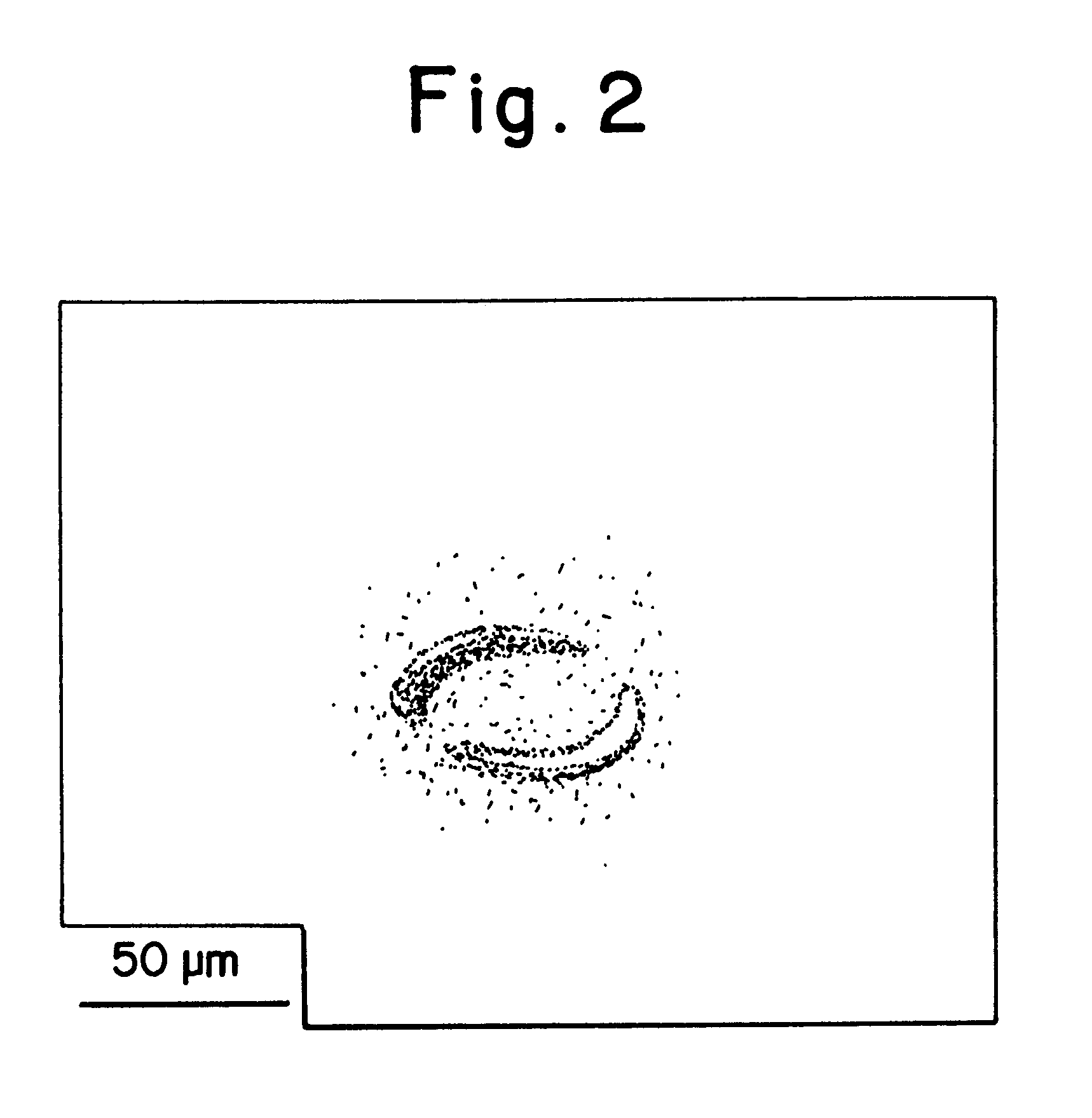Hydrous pellets of ethylene-vinyl acetate copolymer hydrolyzate, production thereof and moldings from such hydrous pellets
a technology of ethylenevinyl acetate and hydrolyzate, which is applied in the field of hydrolyzated pellets of ethylenevinyl acetate copolymer hydrolyzate, production thereof and moldings from such hydrolyzated pellets, can solve the problems of difficult long-run molding and inferior transparency of evoh films, and achieve the effect of increasing the tendency toward discoloration, increasing the tendency toward thermal decomposition and odor emanation, and preventing the transparency
- Summary
- Abstract
- Description
- Claims
- Application Information
AI Technical Summary
Benefits of technology
Problems solved by technology
Method used
Image
Examples
example 2
Porous pellets were produced in the same manner as in Example 1, with an ethylene content of 40 mole percent, a degree of saponification of 99.0 mole percent, a methanol content of 38%, a water content of 22% and a sodium acetate content of 1.5% (per 100 parts of EVOH).
Then, 100 parts of the pellets were introduced into 300 parts of a 0.5% aqueous acetic acid solution at 30.degree. C. and the mixture was stirred for about 30 minutes. After two repetitions of that procedure, 100 parts of the pellets were introduced into 400 parts of warm water at 30.degree. C. and the mixture was stirred for about 60 minutes. After three repetitions of this procedure, 0.15 part of sodium acetate and 0.3 part of acetic acid were added, and the mixture was then contacted with a nitrogen atmosphere at 80.degree. C. in an oven for 30 minutes, to give hydrous EVOH pellets with a methanol content of 0.008%, a water content of 35%, a sodium acetate content of 0.03 part (or sodium content of 0.008 part) (per...
example 3
An EVOH (A) with a degree of saponification of 99.2 mole percent was obtained in the same manner as in Example 1 except that an ethylene-vinyl acetate copolymer with an ethylene content of 29.5 mole percent was used. The EVOH was processed in the same manner as in Example 1 to give hydrous EVOH pellets with a methanol content of 0.008%, a water content of 30%, a sodium acetate content of 0.04 part (or sodium content of 0.011 part) (per 100 parts of EVOH) and an acetic acid content of 0.2 part (per 100 parts of EVOH).
The thus-obtained hydrous EVOH pellets had a storage elastic modulus at 20.degree. C. of 5.5.times.10.sup.6 Pa and a hardness at 20.degree. C. of 75.
FIG. 1 is a DMA measurement chart for the hydrous EVOH pellets of Example 3.
example 5
Hydrous EVOH pellets, a film and an oriented film were obtained in the same manner as in Example 4 except that the hydrous EVOH pellets had a methanol content of 0.01%, a water content of 25% and a boric acid content of 1.2 parts (or boron content of 0.2 part) (per 100 parts of EVOH).
These hydrous EVOH pellets had a storage elastic modulus at 20.degree. C. of 4.times.10.sup.6 Pa.
The water content at the raw film stage was 22%, the water content of the film after first stretching was 20%, the water content of the film after second stretching was 0.6%, and the water content of the stretched film after moisture conditioning was 2.5%. The moldability of the film (raw film) was as good as in Example 4 and the biaxially oriented film obtained was free of fish eyes.
PUM
| Property | Measurement | Unit |
|---|---|---|
| melt temperature | aaaaa | aaaaa |
| height | aaaaa | aaaaa |
| height | aaaaa | aaaaa |
Abstract
Description
Claims
Application Information
 Login to View More
Login to View More - R&D
- Intellectual Property
- Life Sciences
- Materials
- Tech Scout
- Unparalleled Data Quality
- Higher Quality Content
- 60% Fewer Hallucinations
Browse by: Latest US Patents, China's latest patents, Technical Efficacy Thesaurus, Application Domain, Technology Topic, Popular Technical Reports.
© 2025 PatSnap. All rights reserved.Legal|Privacy policy|Modern Slavery Act Transparency Statement|Sitemap|About US| Contact US: help@patsnap.com


